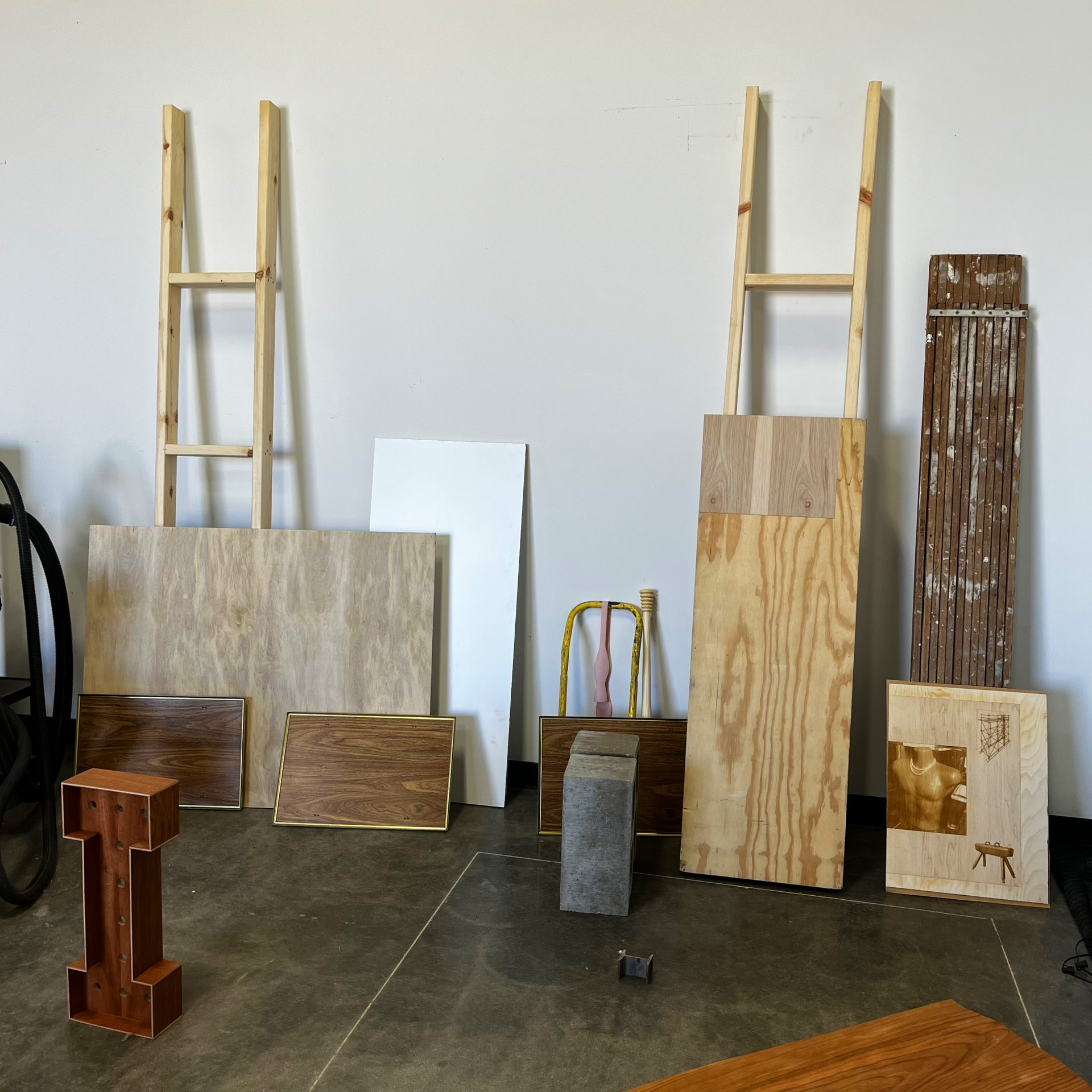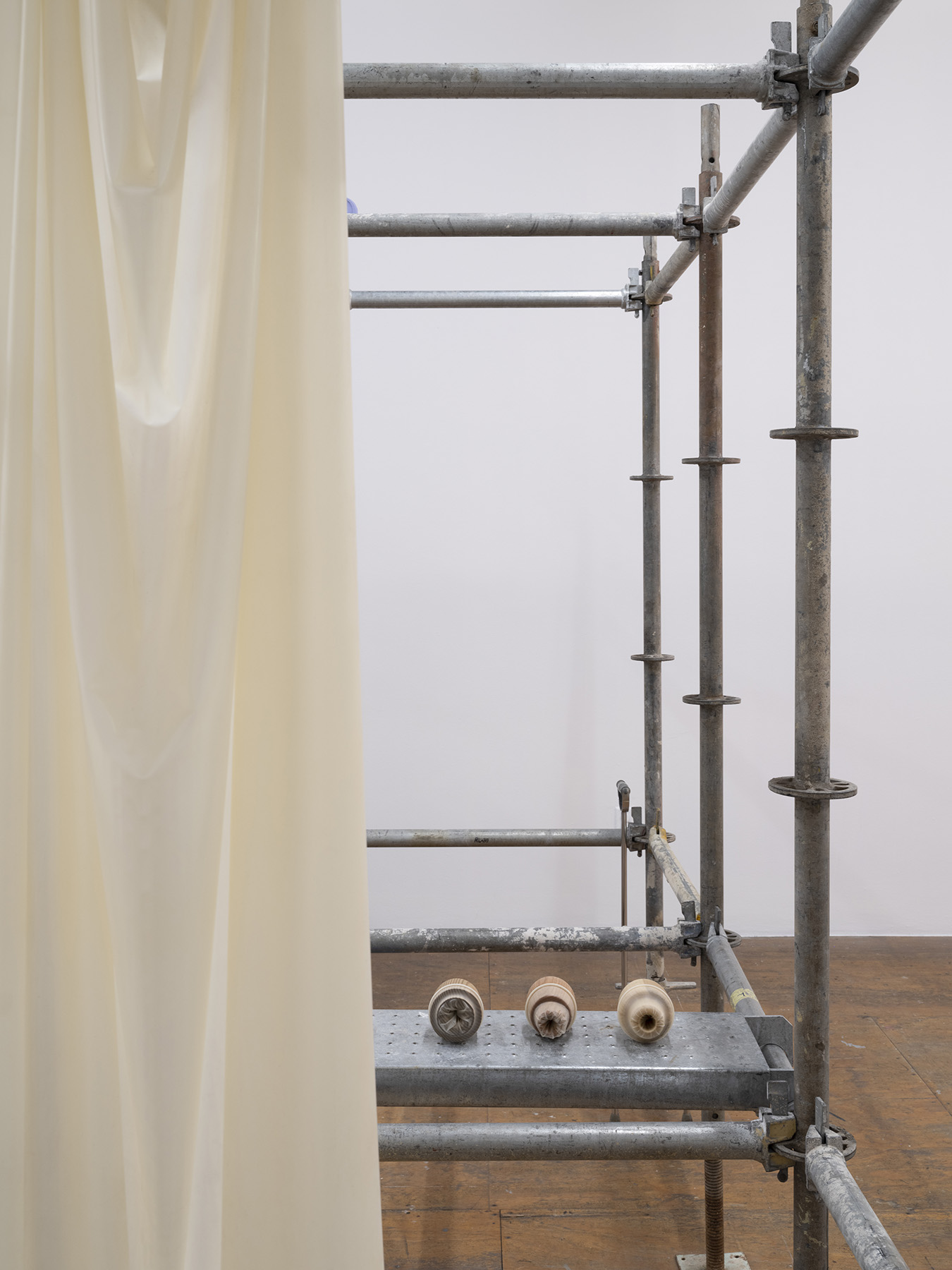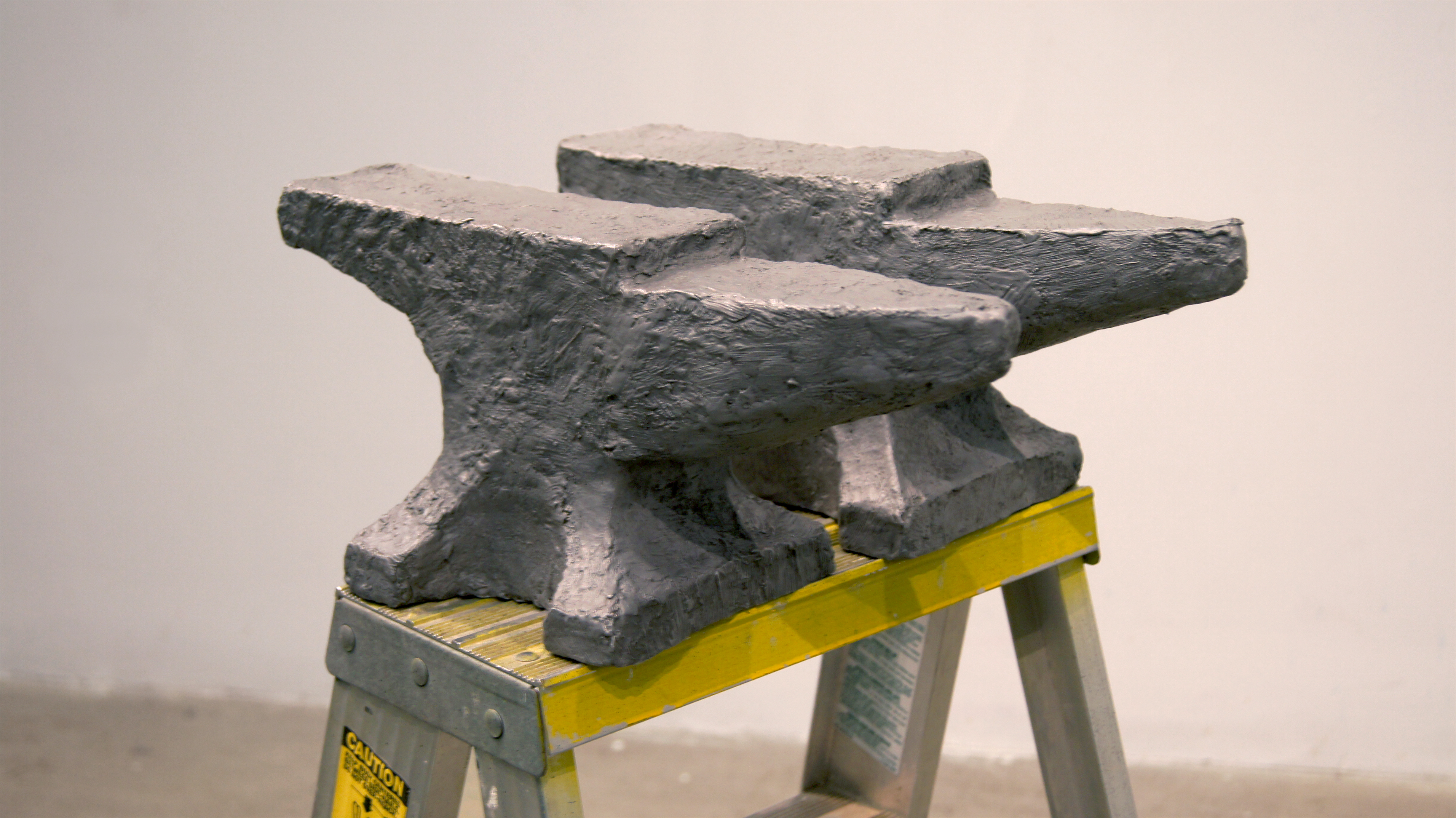
The Dream Sequence and the scaffolding and marquetry elements within it can be understood as parts of a conceptual schematic, wherein Campbell inlays a politic, a handiwork of queer citation. Campbell’s dress rehearsal unfolds itself spatially and visually within three Scenes, each of which includes various relational components that create spacings in between the damages of past and present, for material encounters between the speculative might have been and a future perfect. Carefully rendered and manipulated objects [...] can be found in these constructed scenes that rely on juxtaposition and an accretion of reference and material. The thick discourse produced from these situational assemblages emerges from the language of hyper-indexical production physically apparent in the design of Dress Rehearsal.
-Lia Gangitano, Founder/ Director PARTICIPANT INC

The big irony of the show, which is already filled with irony and humor, is that these precarities are a strength and from that strength springs a beauty that is hard to overlook. Anna Campbell does not hit you over the head with a mandate, rather she provides gaps where the viewer marinates in their own mysteries. There are the simple mysteries, like what does this sculpture mean, but larger ones about how we live our gender, how we perceive and speak about the gender of others, what is our history, is there an “our” history. When you feel saturated with these quandaries, however, Campbell provides something great to look at, you can always just go back to the looking.
- Paul Moreno in “Anna Campbell: Dress Rehearsal for a Dream Sequence” New Art Examiner. Spring Quarter 2022.
 Anna Campbell makes elegant, precise, humorous, and poetic sculpture about queerness. She often references and meticulously rebuilds construction elements like scaffolding, cinder blocks, and sawhorses, and pairs them with equally high-crafted and frilly latex textiles. A balloon, a disco ball, a shopping cart, boxing gloves, a mink stole, a catcher’s mitt - these are some of the objects that occupy Anna’s material vernacular in semi-surrealist visual statements that assert a tough and tender stance of love, power and desire.
Anna Campbell makes elegant, precise, humorous, and poetic sculpture about queerness. She often references and meticulously rebuilds construction elements like scaffolding, cinder blocks, and sawhorses, and pairs them with equally high-crafted and frilly latex textiles. A balloon, a disco ball, a shopping cart, boxing gloves, a mink stole, a catcher’s mitt - these are some of the objects that occupy Anna’s material vernacular in semi-surrealist visual statements that assert a tough and tender stance of love, power and desire.- Liz Collins in Into that Fog: Queer|Art|Mentorship Fellows Exhibit, catalog, New York, NY, 2017. Print.
Anna Campbell’s “I have nothing to declare except my genius,” said Oscar Wilde to the customs agent. (2017) is a set of bronze fig leaves that quote from the convention of sculpted leaves to cover nudity during modest and repressive periods of art history. The leaves alone on a wall, each bulging suggestively, are more than simple phallic signifiers; they gesture to precisely a phantasmic actor or object of desire, and in so doing form a critique of how power is often masked in such institutional settings as white gallery walls (and the white bodies privileges in their proximity).
- Matt Morris in “Let Me Be an Evil Genie of Objects That Screams.” Let Me Be An Object That Screams, edited by Matt Morris. Chicago: Gallery 400, University of Illinois at Chicago, 2017. 111. Print.
 'the ceremony that this /sash must adorn with panache is ambiguous and is many things at once in age, periodization, sex, and gender. Finally, the easy-to-miss unfilled space before the slash is forever, richly ill-defined to form “[?]/sash.” When it is not a sash, what is it?
'the ceremony that this /sash must adorn with panache is ambiguous and is many things at once in age, periodization, sex, and gender. Finally, the easy-to-miss unfilled space before the slash is forever, richly ill-defined to form “[?]/sash.” When it is not a sash, what is it?- Jongwoo Jeremy Kim in ““All Manner of ‘Becomings’”: The Ambiguous Pleasures of the Expanded Leslie-Lohman Museum of Gay and Lesbian Art.” ASAP Journal August 31, 2017. Web.
